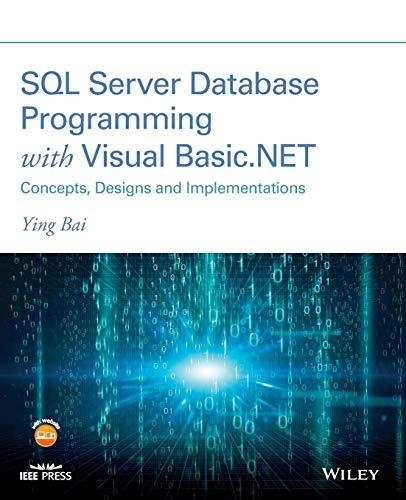Answered step by step
Verified Expert Solution
Question
1 Approved Answer
This is my Data Structure class in java In also need the out put of the code please !! thank you!!!!!! 1. LockADT - Show



This is my Data Structure class in java
In also need the out put of the code please !!
thank you!!!!!!
1. LockADT - Show the interface and all abstract methods LockDataStructureClass - Show the following methods: default constructor, overloaded constructor, copy constructor, setX, sety, setZ, alter (change the lock's combination to the numbers passed) turn (use for loops to show the dial turning), close (locks the lock), attempt (tries to unlock the lock - calls turn( ), inquire (locked or unlocked), current (returns the number the dial is pointing to), to String LockClientDemoClass - You should have a Lock object instantiated and a menu method that displays: 1: set lock combination 2: close lock 3: check status 4: attempt to open lock 5: check what the dial is currently pointing at 6: exit the program Example of turning the lock: First number (17): 03938370393817 Second number (26): 171819383901217181920212223242526 Third number (9): 26252423.1211109 (go directly to the number) Demonstrate all behaviors (actions, methods) of the lock. 2. NoteADT - Show the interface and all abstract methods NoteDataStructureClass - Show the following methods: default constructor, overloaded constructor, copy constructor, setValue (calls other methods: setStrValue, setKeyColor, setFrequency), setLength (calls setStrLength), setFrequency (should be double valuecast)setKeyColor, getValue, getLength, getKeyColor, getFrequency, toString. NoteClientDemoClass -Instantiate two Note objects using the overloaded constructor and two Note objects using the default constructor. A sample output for 1 Note object might appear like: F# Length: Eighth note Value: -3 Black key (sharp) 369.995672Hz CSC236-Lab2(2programs)ADTs 1. Specify, design, and implement a class that can be used in a program that simulates a combination lock. The lock has a circular knob with the numbers 0 through 39 marked on the edge, and it has a three-number combination, which we will call x,y, and z. In order to open the lock, you must turn the knob clockwise at least one entire revolution, stopping with x at the top; then you turn the knob counterclockwise, stopping the "second" time that y appears at the top; finally, you turn the knob clockwise again, stopping the next time that z appears at the top. At this point, you may open the lock. Your "Lock" class should have a constructor that initializes the 3-number combination (use 0, 0, 0 for default arguments in the default constructor). Also, provide the following methods: a) To alter the lock's combination to a new 3-number combination b) To turn the knob in a given direction until a specified number appears at the top. (You also must show all of the numbers in the output as the lock is being turned - could use a for loop) c) To close the lock d) To attempt to open the lock e) To inquire about the status of the lock (open or shut) f) To tell what number is currently at the top Write a complete Java program that uses all of the above methods in the output. 2. Specify, design, and implement a "Note" class that can be used to hold information about a musical note. A programmer should be able to set and retrieve the length of the note and the value of the note. The length of a note may be a sixteenth note, eighth note, quarter note, half note, or whole note. A value is specified by indicating how far the note lies above or below the " A " note that orchestras use in tuning. In counting "how far," you should include both the white and black notes on a piano. For example, the note (value) numbers for the octave beginning at middle C are shown as integers here: Write a complete Java program. - The default constructor should set a note to a middle C quarter note. - Include methods to set a note to a specified length and value. - Write methods to retrieve information about a note, including methods to tell you: a) The letter of the note (A,B,C,,G) b) Whether the note is a natural (white key) or a sharp (black key) on the piano c) The frequency of a note in hertz. In order to calculate the frequency, use the formula: 4402n/12, where n is the note numberStep by Step Solution
There are 3 Steps involved in it
Step: 1

Get Instant Access to Expert-Tailored Solutions
See step-by-step solutions with expert insights and AI powered tools for academic success
Step: 2

Step: 3

Ace Your Homework with AI
Get the answers you need in no time with our AI-driven, step-by-step assistance
Get Started


